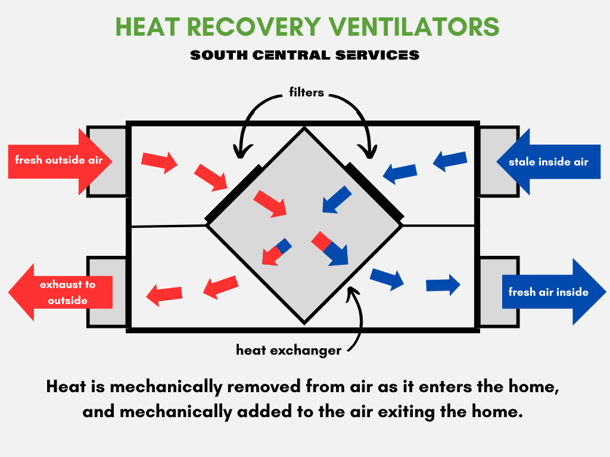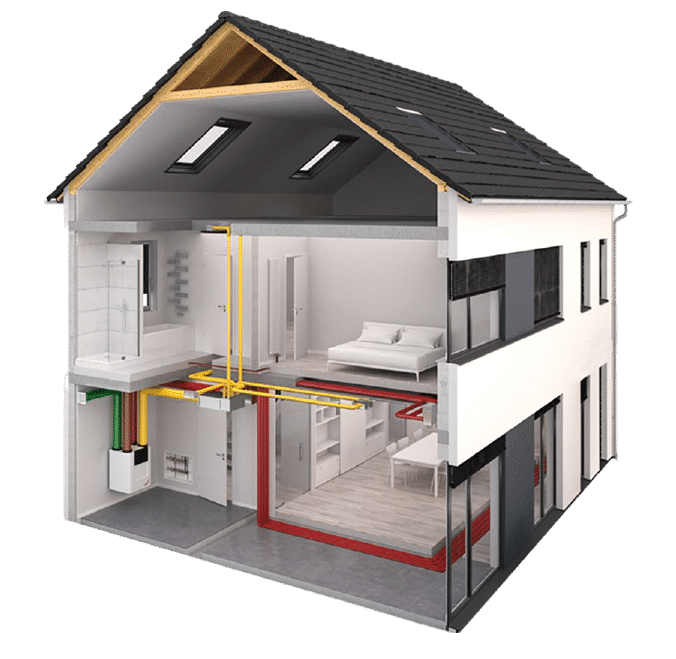Exploring HRV: A Beginner’s Guide
Wiki Article
Checking out the Advantages of Heat Recovery Ventilation for Power Efficiency in Homes
Heat Recovery Ventilation (HRV) systems provide homeowners a functional technique to improving energy efficiency. By recovering heat from outbound air, these systems can significantly minimize heating & cooling costs. Furthermore, they offer a stable supply of fresh air, enhancing indoor air top quality and convenience levels. As property owners think about lasting options, recognizing the nuances of HRV systems ends up being significantly crucial. What elements should one evaluate prior to making such a financial investment?Comprehending Heat Recovery Ventilation Solutions

Just How HRV Improves Indoor Air Top Quality

Energy Financial Savings: The Monetary Benefits of HRV
Maximizing energy efficiency, heat recovery ventilation (HRV) systems use considerable economic advantages for property owners. By recovering and reusing warm from exhaust air, HRVs considerably reduce heating & cooling expenses. This technology can bring about power financial savings of as much as 30%, depending upon climate and usage patterns. Home owners often notice decreased energy bills shortly after installment, making HRVs an economically smart investment in time. Additionally, many areas offer rewards or discounts for energy-efficient upgrades, better improving the monetary allure. As energy costs proceed to rise, the cost-effectiveness of HRVs becomes significantly clear. Generally, the incorporation of HRV systems not only promotes power performance yet also adds to long-lasting economic savings for households.The Environmental Impact of Heat Recovery Ventilation
A substantial environmental advantage of heat recovery ventilation (HRV) systems lies in their capacity to reduce overall energy consumption. By redeeming heat from exhaust air and transferring it to inbound fresh air, HRV systems decrease the requirement for energy-intensive heating and cooling down methods. This reduction in energy need contributes to decrease greenhouse gas exhausts, as less fossil fuel is needed to keep comfortable indoor temperature levels. Furthermore, HRV systems improve interior air high quality by efficiently trading stale air with fresh outside air, reducing reliance on mechanical cooling systems that can hurt the atmosphere. On the whole, the implementation of HRV systems supports lasting living practices and aligns with worldwide efforts to fight environment change by advertising power performance in household HRV Heat Recovery Ventilation settings.
Choosing the Right HRV System for Your Home
Exactly how can homeowners assure they select the appropriate heat recovery ventilation (HRV) system for their needs? Initially, they need to assess their home's dimension and design, as these factors influence airflow requirements. Next off, examining the system's efficiency rankings is essential, as greater rankings indicate much better efficiency and energy financial savings. Homeowners need to likewise think about setup and maintenance prices, contrasting different brands and designs for worth. Furthermore, it is essential to evaluate noise levels, as some systems run even more quietly than others. Consulting with HVAC professionals can provide tailored referrals based upon particular home conditions. Ultimately, analyzing individual testimonials and warranties can aid in making an informed decision, ensuring that the picked HRV system effectively improves interior air quality and power efficiency.Often Asked Questions

How Typically Should I Clean or Keep My HRV System?
The frequency of cleaning or maintaining a warmth healing air flow (HRV) system usually depends upon usage and environmental variables. Generally, it is a good idea to perform maintenance every 6 months to guarantee peak performance and air quality.
Can HRV Systems Help In Reducing Moisture Degrees Indoors?
HRV systems can efficiently lower indoor humidity levels by exchanging stale, moist air with fresh, drier air from outside. HRV Heat Recovery Ventilation. This process aids keep a well balanced indoor environment, improving comfort and avoiding moisture-related issues
What Is the Lifespan of a Common HRV System?
The lifespan of a common heat recovery ventilation (HRV) system varies, normally lasting between 10 to 15 years. Normal upkeep can expand its efficiency and operational life, making sure peak performance throughout its usage duration.Are There Any Sound Concerns With HRV Solutions?
Noise worries with HRV systems can emerge, particularly from fan procedure. Nonetheless, many modern units are created to reduce audio levels, ensuring they run quietly while keeping effectiveness, which resolves possible disruptions in living atmospheres.Can I Mount an HRV System Myself, or Do I Required an Expert?
The specific contemplated whether to install the heat recovery ventilation (HRV) system personally or hire a professional. Normally, while do it yourself setup is possible, know-how warranties correct functionality and conformity with local building regulations, boosting system efficiency.Report this wiki page